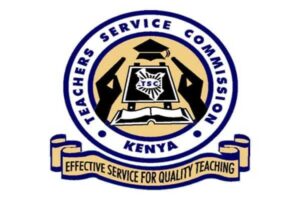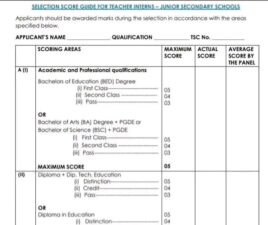Explore the full breakdown of TSC’s 9,159 teacher replacement vacancies for 2025, including distribution across primary, junior, and secondary schools. Understand deployment rules, county posting policies, and what successful applicants should expect.
The Teachers Service Commission (TSC) has issued a major recruitment notice announcing 9,159 teacher replacement vacancies for November 2025. These positions arise from natural attrition, and the recruitment exercise is aimed at stabilizing staffing levels in public primary, junior, and secondary schools across Kenya. For teachers planning to apply, understanding the vacancy breakdown and deployment rules is essential for making informed decisions.
This article provides a detailed analysis of the distribution of vacancies and the posting guidelines that successful applicants must follow.
1. Full Breakdown of the 9,159 TSC Vacancies
The 9,159 replacement vacancies are distributed across three main education levels:
a) Primary School Vacancies – 7,065 Positions
The largest share of the vacancies is allocated to primary schools. These replacements target P1-trained teachers who will take up roles in lower and upper primary.
This category often receives the highest number of applicants because primary teaching positions cover all counties and include both rural and urban schools.
b) Junior School Vacancies – 12 Positions
Junior school vacancies are significantly fewer, with only 12 available positions. This is due to the earlier mass deployment of teachers during the rollout of the Competency-Based Curriculum (CBC). The few available slots arise from resignations, transfers, and retirement within the junior school workforce.
Applicants must hold a Diploma in Education specializing in junior school learning areas or higher qualifications.
c) Secondary School Vacancies – 2,082 Positions
Secondary schools account for 2,082 replacement vacancies, covering various subject combinations under the 8-4-4 and CBC systems. These positions require teachers with diplomas, degrees, or PGDE qualifications.
Subject combinations that experience high turnover—such as sciences, mathematics, languages, and humanities—feature prominently in this category.
2. Vacancy Distribution by County
TSC provides a detailed list of vacancies per county and school on the official website www.tsc.go.ke. Each county receives a different number of slots depending on:
- Teacher shortages
- Natural attrition rates
- School enrolment levels
- Staffing imbalance
- Rural vs urban teacher distribution
Counties with larger populations and higher school density—such as Nairobi, Kakamega, Kisii, Kiambu, Nakuru, and Bungoma—typically receive more vacancies. Rural and ASAL counties also receive significant allocations due to higher attrition and lower teacher retention rates.
Applicants must review the county vacancy lists before applying because TSC does not allow changes after submission.
3. Deployment Rules for Successful Candidates
One of the most important aspects of TSC recruitment is understanding where you will be posted once selected. TSC deployment rules are clear and non-negotiable.
a) Posting Within the County, Not the School
Successful candidates may be posted anywhere within the county where they attended the interview. This means:
- You cannot choose the exact school
- You may not remain in the school you applied for
- Deployment depends on county staffing needs
Applicants must therefore be flexible and prepared to serve in any institution within the county.
b) No Transfers Before Completion of the Minimum Service Period
TSC typically requires new recruits to serve for a minimum period (often 3–5 years) before transfer requests can be considered.
c) Deployment Based on Staffing Gaps
School staffing gaps influence where teachers will be placed. Schools facing critical shortages—especially rural and marginalized areas—are prioritized during deployment.
d) Merit List Dictates Posting Priority
The higher a teacher ranks on the merit list:
- The higher the likelihood of securing a post
- The more posting options they may have within the county
- The quicker they may receive their appointment letters
Merit lists generated from the 2025 recruitment will also be used in future hiring within the financial year.
4. Why Understanding Vacancy Breakdown Matters
Knowing the vacancy allocation helps applicants:
- Choose counties with higher chances of employment
- Prepare documents and subject combinations strategically
- Understand competition levels
- Anticipate potential posting locations
- Avoid unrealistic expectations
This knowledge increases the likelihood of submitting a well-thought-out application.
The TSC 2025 recruitment, with its 9,159 vacancies, provides a major opportunity for teachers across Kenya. Understanding how these vacancies are distributed and how the deployment rules work is vital for applicants hoping to secure a position. By analyzing available slots, reviewing county allocations, and preparing for flexible posting, teachers can approach the application process with clarity and confidence.





